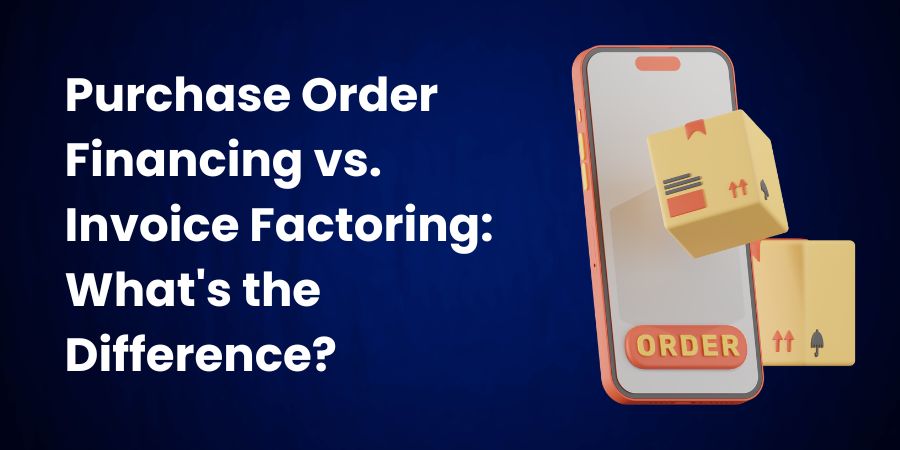
Business Finance
In today’s interconnected world, global expansion is not just for multinational corporations. Many small and medium-sized businesses are also venturing beyond their home turf, aiming for a share of the international market. As exciting as it sounds, going global comes with its set of challenges. One crucial aspect that cannot be overlooked is the financial strategy, especially the role of trade finance. This article sheds light on 12 tips to consider when taking your business global, emphasizing the importance of trade finance loan solutions.
1. Understand the Importance of Trade Finance
What is Trade Finance?
Trade finance represents the financial instruments and products used by companies to facilitate international trade and commerce. This kind of financing ensures that risks associated with global trade, such as currency fluctuations, political instability, or payment delays, are mitigated.
The Trade Finance Loan Advantage
Trade finance loans can bridge the payment gap between exporters and importers. With a trade finance loan, businesses can ensure their international transactions run smoothly, without worrying about payment delays or the complexities of cross-border dealings.
2. Research and Identify Your Target Markets
Before expanding, thoroughly research potential markets. Understand their consumer behavior, local customs, and business etiquette. Look into market size, potential growth, and competition. Having a deep understanding of the market dynamics can help you leverage a trade finance loan effectively.
3. Prioritize Compliance and Legalities
Different countries have unique regulations, taxation policies, and compliance requirements. It’s imperative to familiarize yourself with local laws. This knowledge will aid in structuring your trade finance strategies efficiently and ensuring smooth international transactions.
4. Build a Strong Local Network
Establishing strong relationships with local suppliers, distributors, and other stakeholders is essential. Not only will this support your business operations, but it can also be advantageous when seeking trade finance options. Local partners can provide insights into reputable banks or financial institutions that offer favorable trade finance loan terms.
5. Offer Flexible Payment Terms with Trade Finance
To be competitive globally, offering flexible payment terms to your international customers can be a game-changer. With trade finance solutions like letters of credit or export factoring, you can provide attractive payment terms to your customers while ensuring your cash flow remains stable.
6. Protect Against Currency Fluctuations
One of the challenges of international trade is the volatility of currency rates. Trade finance tools can offer some protection against this volatility. Forward contracts, for instance, allow businesses to set exchange rates for future transactions, providing a buffer against unexpected currency shifts.
7. Continuously Educate Yourself
The world of global business and trade finance is ever-evolving. Regularly educate yourself on the latest trends, market shifts, and advancements in trade finance solutions. Staying updated will position your business to seize new opportunities and mitigate potential risks.
8. Diversify Supply Chains
When you venture globally, relying on a single supplier or distributor can be a significant risk. Political turmoil, economic downturns, or natural disasters in one region can disrupt your entire operation.
Diversifying means more contracts, shipments, and transactions. Trade finance solutions can streamline and secure these multifaceted operations. For instance, if you’re importing from multiple sources, trade finance can ensure that each supplier is paid on time and under agreed terms, fostering trust and reliability.
9. Consider Cultural and Language Barriers
Understanding and respecting cultural nuances is vital. This includes everything from business etiquettes to holidays and non-working days in the region. Similarly, language can be a barrier. Hiring local representatives or using professional translation services can mitigate misunderstandings.
Documentation is a crucial part of trade finance. Ensuring that all paperwork is correctly translated and adheres to local norms prevents costly delays and disputes.
10. Invest in Digital Transformation
Today’s global business landscape is increasingly digital. Using advanced ERP systems, CRM platforms, and digital payment solutions can simplify international transactions.
Many trade finance institutions are adopting digital platforms to make the loan application and approval processes more straightforward. Digital trade finance platforms also offer real-time insights, tracking, and analytics, ensuring you have a finger on the pulse of every transaction.
11. Adapt Marketing and Branding Strategies
What works in your home market might not resonate internationally. Adapting marketing strategies based on local preferences is key to gaining customer trust and building brand recognition.
12. Plan Logistically
International shipping, warehousing, and distribution require meticulous planning. Considering factors like transportation modes, warehousing locations, and customs clearance procedures is crucial.
Trade finance solutions, especially those like documentary collections, can ensure that goods are released only upon meeting specific conditions, like producing necessary shipping documents or proof of customs clearance. This ensures both parties adhere to the agreed logistical terms.
Conclusion
Taking your business global is a commendable and potentially profitable endeavor. However, success in international markets requires a keen understanding of local dynamics, strong networks, and robust financial strategies. Trade finance, especially trade finance loans, play an instrumental role in supporting businesses in their global ventures. By leveraging these tools and adopting the above tips, businesses can navigate the complexities of international expansion and set themselves up for global success.
If trade finance is not on your radar, you can also opt to apply for an unsecured business loan to fund your expansion. If you have 12 months trading history and have generated over R1 million in sales, you can apply for a business loan.

Business Finance
In today’s globalized economy, trade finance loans have become an essential tool for businesses looking to seize international opportunities. Whether you’re an import-export company or a growing enterprise with global aspirations, understanding the ins and outs of trade finance loans can be the key to unlocking your business’s potential.
Trade finance loans are specifically designed to facilitate cross-border transactions by providing the necessary funds to finance international trade. These loans offer a range of financial instruments, such as letters of credit, bank guarantees, and supply chain financing, to mitigate the risks associated with international trade and ensure smooth transactions.
By leveraging trade finance loans, businesses can access working capital to finance inventory, bridge payment gaps, and expand their operations globally. This financial tool not only enables businesses to seize lucrative trade opportunities but also minimizes the risks of non-payment and currency fluctuations, ultimately ensuring a more secure and successful international trade journey.
In this article, we will dive deep into the world of trade finance loans, discussing their various types, benefits, and how you can leverage them to expand your global trade horizons. So buckle up and get ready to take your business to new heights!
Understanding the basics of global trade
Global trade is the exchange of goods and services across international borders. It has become increasingly important in today’s interconnected world, with businesses of all sizes seeking to tap into new markets and diversify their revenue streams. However, engaging in global trade comes with its own set of challenges, including currency fluctuations, political risks, and the complexity of international regulations.
To navigate these challenges, businesses need access to trade finance solutions that can provide the necessary funds and risk mitigation tools. Trade finance loans play a crucial role in facilitating international trade by providing businesses with the working capital needed to finance their trade operations.
The role of trade finance in international trade
Trade finance is a specialized branch of finance that focuses on providing financial products and services to facilitate international trade. It encompasses a wide range of activities, including financing imports and exports, managing currency risks, and providing working capital to businesses engaged in cross-border trade.
The main role of trade finance in international trade is to bridge the gap between the time goods are shipped and the time payment is received. This time gap can be substantial, especially in long-distance trade, and can create cash flow challenges for businesses. Trade finance loans help alleviate these challenges by providing businesses with the necessary funds to cover their trade-related expenses.
Types of trade finance loans
Trade finance loans come in various forms, each tailored to meet different trade requirements. Some of the most common types of trade finance loans include:
1. Letters of Credit (LC): A letter of credit is a financial instrument issued by a bank that guarantees payment to the exporter once the specified conditions are met. It acts as a form of payment assurance for both the buyer and the seller, reducing the risk of non-payment.
2. Bank Guarantees: Bank guarantees are a commitment issued by a bank on behalf of its customer to pay a specified amount to a beneficiary if the customer fails to fulfill their contractual obligations. They provide assurance to the beneficiary that they will be compensated in case of non-performance by the customer.
3. Supply Chain Financing: Supply chain financing involves providing financing to suppliers or buyers in a supply chain to optimize working capital and ensure smooth trade transactions. It helps improve the cash flow of businesses involved in international trade by providing them with early payment for their invoices or extending their payment terms.
4. Export Credit Insurance: Export credit insurance is a type of insurance policy that protects exporters against the risk of non-payment by their overseas buyers. It provides coverage for both commercial and political risks, ensuring that exporters receive payment for their goods or services even if the buyer defaults.
Benefits of trade finance loans
Trade finance loans offer numerous benefits to businesses engaged in international trade. Some of the key benefits of trade finance include:
1. Access to working capital: Trade finance loans provide businesses with the necessary funds to finance their trade operations, including purchasing inventory, paying suppliers, and covering transportation costs. This access to working capital enables businesses to seize trade opportunities and grow their operations.
2. Risk mitigation: International trade comes with inherent risks, such as non-payment by buyers, currency fluctuations, and political instability. Trade finance loans help mitigate these risks by providing financial instruments like letters of credit and export credit insurance. These instruments ensure payment security and protect businesses from potential losses.
3. Improved cash flow: Trade finance loans help improve cash flow by bridging the gap between the time goods are shipped and the time payment is received. This ensures that businesses have the necessary liquidity to meet their financial obligations and sustain their trade operations.
4. Competitive advantage: By leveraging trade finance loans, businesses can offer more favorable payment terms to their overseas buyers, such as open account terms or deferred payment options. This can give them a competitive edge in the global market and attract more customers.
5. International expansion: Trade finance loans provide businesses with the financial resources to expand their operations internationally. By accessing working capital, businesses can explore new markets, establish local partnerships, and increase their global presence.
How to qualify for a trade finance loan
Qualifying for a trade finance loan typically requires meeting certain criteria set by the trade finance provider. While these criteria may vary depending on the provider and the specific type of loan, some common requirements include:
1. Established trade history: Trade finance providers often prefer to work with businesses that have a proven track record in international trade. This helps establish the borrower’s credibility and reduces the risk of non-payment.
2. Financial stability: Businesses seeking trade finance loans are usually required to demonstrate financial stability and a positive cash flow. This reassures the lender that the borrower has the ability to repay the loan.
3. Collateral or guarantees: Depending on the loan amount and risk profile, trade finance providers may require collateral or guarantees to secure the loan. Collateral can come in the form of inventory, accounts receivable, or other assets that can be pledged as security.
4. Compliance with regulations: Businesses must comply with all relevant trade regulations and international trade laws. This includes ensuring compliance with import/export controls, economic sanctions, and anti-money laundering regulations.
It’s important to note that each trade finance provider may have its own specific requirements and criteria for loan approval. It’s advisable to consult with multiple providers and compare their offerings before making a decision.
Common challenges in trade finance and how to overcome them
While trade finance loans offer numerous benefits, businesses may encounter certain challenges when navigating the world of international trade finance. Some common challenges include:
1. Complex documentation: International trade finance involves a significant amount of documentation, including invoices, bills of lading, and customs documents. Keeping track of and managing these documents can be time-consuming and prone to errors. To overcome this challenge, businesses can leverage technology solutions such as trade finance platforms that streamline the documentation process and ensure compliance with trade regulations.
2. Currency fluctuations: Currency exchange rates can fluctuate rapidly, impacting the profitability of international trade transactions. To mitigate the risks associated with currency fluctuations, businesses can consider using hedging instruments like forward contracts or currency options. These instruments allow businesses to lock in exchange rates in advance, providing certainty and protection against unfavorable currency movements.
3. Political and economic risks: International trade is subject to political and economic risks, such as changes in government policies, trade disputes, or economic crises. To manage these risks, businesses can stay informed about geopolitical developments, diversify their customer base, and consider political risk insurance.
4. Non-payment risks: Non-payment by overseas buyers is a common concern in international trade. To mitigate this risk, businesses can utilize trade finance instruments like letters of credit or export credit insurance. These instruments provide payment security and ensure that businesses receive payment for their goods or services, even if the buyer defaults.
By being aware of these challenges and implementing appropriate risk mitigation strategies, businesses can navigate the complexities of trade finance and ensure successful international trade transactions.
Leveraging trade finance for global trade success
In today’s global economy, trade finance loans have become indispensable for businesses looking to leverage international trade opportunities. By providing access to working capital, mitigating risks, and enabling smooth trade transactions, trade finance loans empower businesses to expand their global presence and seize lucrative trade opportunities.
Understanding the basics of global trade, the role of trade finance in international trade, and the various types and benefits of trade finance loans is crucial for businesses aiming to succeed in the global marketplace. By qualifying for the right trade finance loan, choosing the right trade finance provider, and overcoming common trade finance challenges, businesses can unlock their full potential and embark on a successful global trade journey.
So, whether you’re a seasoned exporter or a growing enterprise venturing into international trade, don’t underestimate the power of trade finance loans in fueling your global trade ambitions. Embrace the opportunities, navigate the challenges, and let trade finance be the fuel that propels your business to new heights.
Learn more about trade finance or start your application here
Frequently Asked Questions
Q: What is trade finance?
Trade finance represents the financial instruments and products that facilitate international trade and commerce. It helps to bridge the gap between the payment from the buyer and the shipment of goods by the seller, reducing the risks associated with global trade such as currency fluctuations, non-payment, and political instability.
Q: How does trade finance benefit exporters and importers?
For exporters, trade finance provides assurance that they will receive payment for their goods and services. For importers, it ensures the goods or services are delivered as agreed before payment is released. Overall, it helps businesses manage their cash flow better, secure payment assurance, and reduce the risk of international transactions.
Q: What are some common types of trade finance products?
Common trade finance products include letters of credit (LCs), export credit, import/export loans, bank guarantees, factoring, and insurance products designed to mitigate the risks of international trade.
Q: How does a Letter of Credit work in trade finance?
A Letter of Credit (LC) is a commitment by a bank on behalf of the buyer (importer) that payment will be made to the exporter, provided that the terms and conditions stated in the LC have been met, as verified through the presentation of all required documents. It offers a high level of security for both parties in an international trade transaction.
Q: Can small businesses use trade finance?
Yes, small businesses can use trade finance. Many financial institutions and trade finance providers offer products specifically designed for SMEs to support their international trade activities. These products can be tailored to fit the needs of small businesses, helping them to compete on a global scale.
Q: What is the difference between trade finance and a traditional loan?
The primary difference is that trade finance is specifically linked to the value of the trade transactions (goods and services) and is primarily used to finance international trade, while traditional loans are not necessarily tied to trade transactions and can be used for various purposes including operational costs, investments, etc.
Q: What risks are associated with trade finance?
While trade finance can mitigate many risks of international trade, it still involves certain risks like compliance risk, country risk, currency risk, and the risk of non-payment or late payment despite financial instruments in place. It’s crucial for businesses to understand these risks and work with reputable financial institutions to minimize them.
Q: Can trade finance help in managing currency risks?
Yes, some trade finance products can help manage currency risk through hedging and other mechanisms that protect against fluctuations in foreign exchange rates. This is particularly beneficial for businesses dealing in multiple currencies.

Business Finance, Personal Finance, Property
Bridging finance is a short-term loan that can provide quick access to funds when you need them. This type of finance is often used to bridge the gap between the sale of one property and the purchase of another. In South Africa, there are five types of bridging finance available, each with its own unique features and benefits. Learn more about these options and how they can help you meet your financial needs.
1. Pension Bridging Finance
Pension bridging finance is a type of bridging finance that allows individuals to access a portion of their pension fund before it is paid out. This can be useful for those who need quick access to funds for a variety of reasons, such as paying off debt or covering unexpected expenses. The amount that can be borrowed is typically based on the value of the individual’s pension fund, and the loan is repaid once the individual receives their pension payout. It’s important to note that there are certain eligibility requirements for pension bridging finance, and individuals should carefully consider the potential impact on their retirement savings before taking out this type of loan.
2. Property Bridging Finance
Property bridging finance is a type of short-term loan that is used to bridge the gap between the purchase of a new property and the sale of an existing property. This type of finance can be useful for individuals who need to access funds quickly in order to secure a new property, but are still waiting for the sale of their existing property to go through. The loan is typically secured against the existing property, and is repaid once the sale of the property is complete. It’s important to note that property bridging finance can be expensive, and individuals should carefully consider the potential costs before taking out this type of loan.
3. Business Bridging Finance
Business bridging finance is a type of short-term loan that is used to bridge the gap between the need for funds and the availability of those funds. This type of finance can be useful for businesses that need to access funds quickly in order to take advantage of a business opportunity or to cover unexpected expenses. The loan is typically secured against the assets of the business, and is repaid once the business has access to the necessary funds. It’s important to note that business bridging finance can be expensive, and businesses should carefully consider the potential costs before taking out this type of loan.
4. Legal Bridging Finance
Legal bridging finance is a type of bridging finance that is specifically designed for attorneys and law firms. This type of finance can be used to cover the costs of legal cases, such as court fees, expert witness fees, and other expenses. Legal bridging finance is typically secured against the expected settlement or judgment in the case, and is repaid once the case is resolved. It’s important to note that legal bridging finance can be expensive, and attorneys and law firms should carefully consider the potential costs before taking out this type of loan.
5. Road Accident Fund Bridging Finance
Road Accident Fund (RAF) bridging finance is a type of bridging finance that is specifically designed for individuals who have been involved in a road accident and are waiting for their RAF claim to be settled. This type of finance can be used to cover medical expenses, loss of income, and other expenses related to the accident. RAF bridging finance is typically secured against the expected settlement from the RAF, and is repaid once the claim is settled. It’s important to note that RAF bridging finance can be expensive, and individuals should carefully consider the potential costs before taking out this type of loan.
Frequently Asked Questions
Q: What is bridging finance?
Bridging finance in South Africa is a short-term loan intended to provide immediate cash flow for individuals or businesses awaiting funds from a definitive source, like the sale of a property or the payout of a mortgage bond. It “bridges” the gap between needing funds now and receiving them in the future.
Q: What are the main types of bridging finance available in South Africa?
The main types include:
- Property Bridging Finance: Funds loaned against the expected proceeds from the sale of a property.
- Pension Bridging Loans: Advances on pending pension payouts or provident funds.
- Debtors Bridging Finance: Loans against confirmed but unpaid invoices for services rendered or goods delivered.
- Business Bridging Loans: Short-term loans to cover immediate business expenses.
- Property Sale Advance: An advance on the equity of a property currently being sold.
Q: Who can qualify for bridging finance in South Africa?
Eligibility varies by the type of bridging finance:
- Individuals selling property or awaiting pension/provident fund payouts may qualify for property or pension bridging loans.
- Businesses with confirmed but unpaid invoices or immediate cash flow needs can apply for debtors or business bridging loans.
- Sellers of property with significant equity might qualify for a property sale advance.
Q: How quickly can I access funds from a bridging loan?
The speed of access to bridging finance funds can vary, but typically, funds can be available within a few days to a week after approval. The exact timing depends on the lender’s processes and the type of bridging finance.
Q: What are the interest rates and fees for bridging finance in South Africa?
Interest rates and fees for bridging finance are generally higher than those for traditional loans due to the short-term and higher-risk nature of the loan. Rates and fees will vary significantly between lenders and depend on the type of bridging finance, the loan amount, and the expected duration of the loan.
Q: What risks are associated with taking out bridging finance?
The primary risks include high-interest rates and the potential for financial strain if the expected funds (from a property sale, invoice payment, pension payout, etc.) are delayed beyond the term of the bridge loan or if the final amount received is less than anticipated.
Applying typically involves contacting a lender specializing in bridging finance and providing documentation that supports your expected payout or
Q: How do I apply for bridging finance in South Africa?
Applying typically involves contacting a lender specializing in bridging finance and providing documentation that supports your expected payout or sale. This might include sale agreements, pension documentation, or confirmed invoices, along with personal or business financial statements.
Q: Can bridging finance be used to purchase a new property before selling my current one?
Yes, property bridging finance can be specifically used to access the equity in your current property to finance the purchase of a new property before the sale of your existing property is finalized.

Business Finance
If you’re a business owner looking for financing options, you may have come across purchase order financing and invoice factoring. While both can provide cash flow for your business, they have different structures and requirements. This guide will help you understand the differences between the two and determine which option is best for your business needs.
Understanding Purchase Order Financing
Purchase order financing is a type of funding that helps businesses fulfill customer orders by providing the necessary funds to pay suppliers for the goods or services needed to complete the order. This type of financing is typically used by businesses that have large orders but don’t have the cash flow to pay for the supplies upfront. With purchase order financing, the lender pays the supplier directly, and the business repays the lender once the customer pays for the order.
Understanding Invoice Factoring
Invoice factoring is a financing option that allows businesses to sell their outstanding invoices to a third-party company, known as a factor, in exchange for immediate cash. The factor then collects payment from the customers on the invoices. This type of financing is typically used by businesses that have outstanding invoices but need cash flow immediately. The factor charges a fee for their services, which is typically a percentage of the invoice amount. Unlike purchase order financing, invoice factoring does not require a specific order or purchase to be made.
Key Differences Between Purchase Order Financing and Invoice Factoring
While both purchase order financing and invoice factoring provide businesses with access to cash flow, there are some key differences between the two options. Purchase order financing is specifically designed to help businesses fulfill large orders by providing the necessary funds to pay suppliers and manufacturers.
Invoice factoring, on the other hand, is focused on providing immediate cash flow by purchasing outstanding invoices. Additionally, purchase order financing requires a specific purchase order or contract, while invoice factoring does not.
Ultimately, the choice between the two options will depend on the specific needs and goals of your business.
Choosing the Right Option for Your Business
When it comes to choosing between purchase order financing and invoice factoring, it’s important to consider the specific needs and goals of your business. If you’re looking to fulfill a large order and need funds to pay suppliers and manufacturers, purchase order financing may be the better option. On the other hand, if you’re looking for immediate cash flow and have outstanding invoices, invoice factoring may be the way to go. It’s important to do your research and work with a reputable financing company to ensure you’re making the best decision for your business.
Pros and Cons of Purchase Order Financing and Invoice Factoring
Both purchase order financing and invoice factoring have their pros and cons. Purchase order financing can provide the necessary funds to fulfill large orders, but it can be more difficult to qualify for and may come with higher fees. Invoice factoring can provide immediate cash flow, but it may require giving up a portion of your invoice payments and can be seen as a negative by some customers. Ultimately, it’s important to weigh the benefits and drawbacks of each option and choose the one that best fits your business’s needs.
Frequently Asked Questions
Q: What types of businesses can benefit from Purchase Order Financing and Invoice Factoring?
Businesses in industries like manufacturing, distribution, and wholesale, especially those with thin margins or that experience seasonal fluctuations in cash flow, can benefit from these financing options. Purchase Order Financing is ideal for businesses that need funding to fulfill new orders, while Invoice Factoring suits businesses seeking immediate cash flow improvement.
Q: Are there any risks associated with Purchase Order Financing and Invoice Factoring?
Yes, both financing methods come with risks, such as dependency on external financing, potential impacts on customer relationships, and the costs of financing, which can reduce overall profit margins. Businesses should carefully consider these factors and their ability to manage the repayments or cash flow impacts.
Q: How do I choose between Purchase Order Financing and Invoice Factoring?
The choice depends on your business’s specific needs. If your challenge is fulfilling orders due to a lack of funds, Purchase Order Financing might be more suitable. If you need immediate cash flow to cover operating expenses or take advantage of early payment discounts from suppliers, Invoice Factoring could be the better option.
Q: Can I use both Purchase Order Financing and Invoice Factoring?
Yes, some businesses use both financing options in tandem to manage different aspects of their cash flow. For example, a business might use Purchase Order Financing to fulfill a large order and then use Invoice Factoring once the invoice is issued to improve cash flow.
Q: Where can I find Purchase Order Financing and Invoice Factoring services?
Many financial institutions, specialized lending companies, and factoring companies offer these services. It’s essential to compare options and understand the terms, fees, and repayment structures before choosing a provider.




